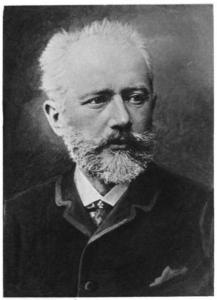Tchaikovsky: Variations on a Rococo Theme
 In contrast to the composers known as the Might Five, discussed in the prior post, Tchaikovsky (1840-1893) was far more committed to the use of Western European forms. Russia had looked West since the time of Peter the Great’s Father, Tsar Alexei. The city of St. Petersburg, built under Peter’s direction, was a fully Westernized city – laid out in boulevards (in contrast to Moscow). Russians from Peter’s time forward turned to Italian architects to build palaces and brought in Western fashions. Talented musicians were sent to study at the conservatories in Italy.
In contrast to the composers known as the Might Five, discussed in the prior post, Tchaikovsky (1840-1893) was far more committed to the use of Western European forms. Russia had looked West since the time of Peter the Great’s Father, Tsar Alexei. The city of St. Petersburg, built under Peter’s direction, was a fully Westernized city – laid out in boulevards (in contrast to Moscow). Russians from Peter’s time forward turned to Italian architects to build palaces and brought in Western fashions. Talented musicians were sent to study at the conservatories in Italy.
So incorporating Western elements in Russian music was not a matter of “if,” but how much and for what purpose. Tchaikovsky found endless possibilities using traditional forms such as the concerto, the string quartet, the sonata, and the use of what is known as “theme-and-variation.”
Tchaikovsky (1840-1893) manages to cross over several categories with his Variations on a Rococo Theme written in 1876-77. Start with the obvious (and interesting) mixture– a late Romantic piece built on a Rococo theme. The theme was in fact composed by Tchaikovsky, but in an 18th-century style. The initial theme or melody remains apparent in all of the variations, resulting in a more Classical idea of variation than you might find in variation sets by many late-Romantic composers. And despite being set up as a strict theme and variations structure, the work is set up very much like a Rmoantic cello concerto, complete with virtuosic cadenzas.



